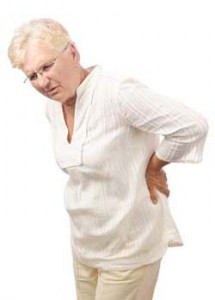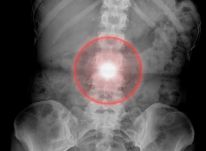Are You Suffering a Mixed Pain Syndrome?
By Steve Hefferon, CMT, CPTA

Despite advances in medical technology and breakthrough self-help programs for pain, people are still suffering. Here at The Healthy Back Institute we pride ourselves on being in the know, at the very core of the back pain issue.
We have developed the international best-selling Lose the Back Pain system, all natural anti-inflammatory supplements and present other products and services that we have vetted and deem “superior.”
Yet people are still suffering needlessly. Why? Because most of us want to label our back pain issue as one thing--like spinal stenosis or herniated disk or some other issue. Yet despite medical “diagnosis” and “disease naming,” the truth is that most people’s pain is not caused by just one thing. It is caused by at least two... and this is called Mixed Pain Syndrome.
It goes without saying that you have two primary goals in your search for relief from your daily chronic pain and suffering: 1) To reduce or eliminate the pain, and 2) To prevent the pain from returning.Each of these primary goals requires different steps or actions to be achieved. This is based on the unique cause or reason for your pain. Let me explain two reasons and two options for you, to help you better understand the Mixed Pain Syndrome.
First Reason for Pain:
Local Neuropathic / Mechanical Compression
Second Reason for Pain:
Nociceptive / Irritation Due to Inflammation.
To correct these issues, three areas that need to be addressed: 1) Physical Body, 2) Mind/Body Connection, 3) Nutritional Deficiencies or Excesses.
Please understand that The Healthy Back Institute supports the treatments that we do because they address the core areas that help the healing process, as opposed merely covering up of the symptoms.
Again, if you are looking for a solution to your condition, I suggest that you consider that you may have a mixed pain syndrome. As a result, steps are going to have to be taken to address the compression and soft tissue issues. For optimal healing and relief, you must be willing to experiment with different treatment modalities and to not cling to the idea that one person or method can do all treatments.
As an example, different pathophysiological mechanisms are thought to operate in chronic sciatica. Nociceptive and neuropathic pain components can be distinguished. Neuropathic pain may be caused by lesions of nociceptive sprouts within the degenerated disc (local neuropathic), mechanical compression of the nerve root (mechanical neuropathic root pain), or by action of inflammatory mediators (inflammatory neuropathic root pain) originating from the degenerative disc even without any mechanical compression.
Since different pain-generating mechanisms possibly underlie sciatic pain, the term mixed pain syndrome was established. The incidence of each pain component in chronic sciatica as well as validated diagnostic tools to identify them remain unknown.
Current analgesic therapeutic first-line strategies for chronic sciatica rely on NSAIDs that are known to relieve nociceptive pain only. Nociceptive pain can include any one or combination of soft tissue trauma, such as trigger points, inflammation, scar tissue, micro tears.
FREE Report
101 Ways Enzymes Can Help You End Joint Pain, Stop Disease and Live Longer!

Most Popular Posts

Exercise for Spinal Stenosis
Spinal Stenosis is a condition that typically affects people later...
[Read More…]
Spinal Stenosis Surgery
Spinal stenosis is a condition that can be very uncomfortable...
[Read More…]